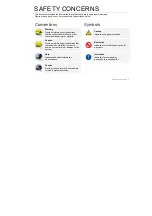
MERLIN LEGEND Communications System Release 5.0
Feature Reference
555-650-110
Issue 1
June 1997
Features
Page 169
Coverage
Do Not Disturb
When a sender turns on Do Not Disturb, Individual Coverage or Group
Coverage receivers for that sender can call the sender. All other calls to
the sender go to coverage.
When a receiver turns on Do Not Disturb, he or she does not receive
coverage calls. However, a sender whose calls are set to be covered by
the receiver can call that receiver, despite Do Not Disturb.
If both a sender and all receivers have Do Not Disturb on, the sender’s
calls do not go to coverage and the caller hears a busy signal. On a
personal line, the caller hears ringback and the green LED flashes, but
the telephone does not ring.
Forward and
Follow Me
In Release 3.0 and prior systems (or if the Forwarding Delay is
programmed to 0 rings), when a coverage sender forwards, calls are
forwarded and sent to coverage at the same time. Calls received on any
type of Cover button are not forwarded.
If a coverage receiver has activated Remote Call Forwarding, calls sent to
that extension through Coverage are not forwarded to the remote
location.
n Release 4.0 and later systems, if both coverage and forwarding are on
and the Forwarding Delay is more than 0, one of the following occurs:.
■
A call that is sent to Group Coverage before the Forwarding attempt
is not forwarded.
■
A call that is remote call-forwarded before any coverage is not
covered.
■
A call that is remote call-forwarded while Primary and/or Secondary
Coverage extensions are alerting is removed from those coverage
points and is not sent to Group Coverage.
Forward
and Follow Me
continued
■
If a call is sent to Group Coverage after forwarding, the call is
removed from the called extension, the forwarded-to extension, and
any Primary and Secondary Coverage buttons.
Group Calling
A calling group can be a receiver for up to 30 coverage groups. A calling
group cannot be a receiver for Individual Coverage. A coverage group
can have only one calling group as a receiver, but members of the
coverage group can also have Individual Coverage receivers.
As soon as a Group Coverage call is sent from the calling group queue to
a calling group member, ring and LED flashing are removed from the
sender’s telephone, except for outside calls received on personal lines.
A calling group cannot be a sender, but an individual calling group
member can be a sender for Individual Coverage and/or a member of a
coverage group. When a call to the calling group extension number is
sent from the queue to the calling group member, it goes only to the
member’s Individual Coverage receivers and not to the member’s Group
Coverage receivers. Calls to the member’s individual extension go to both
Individual and Group Coverage receivers.
















































